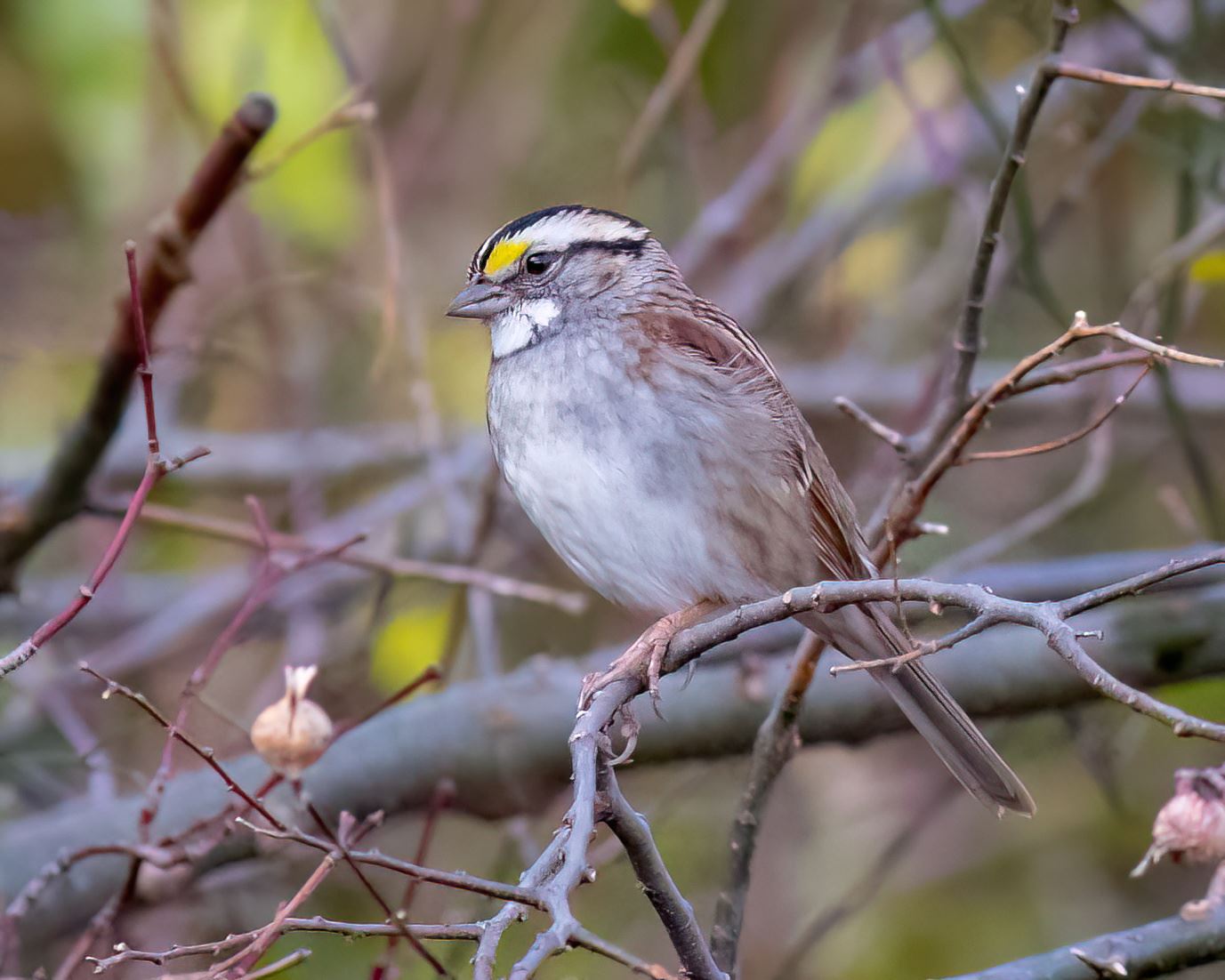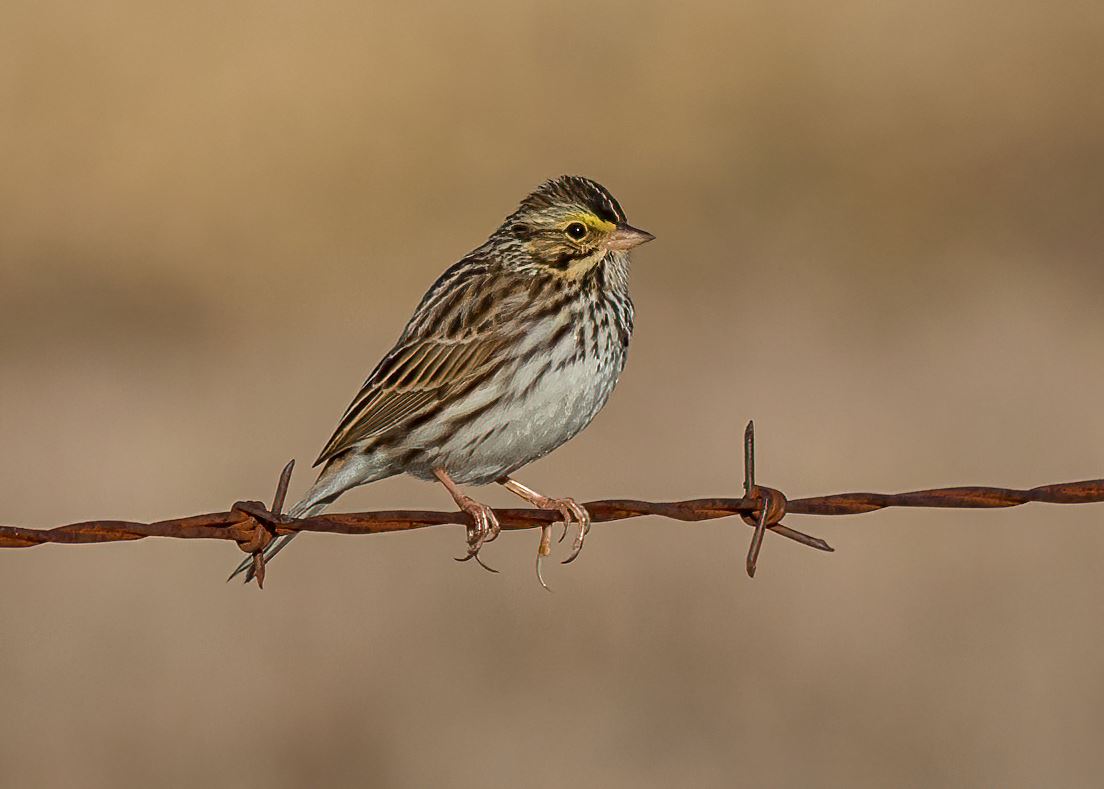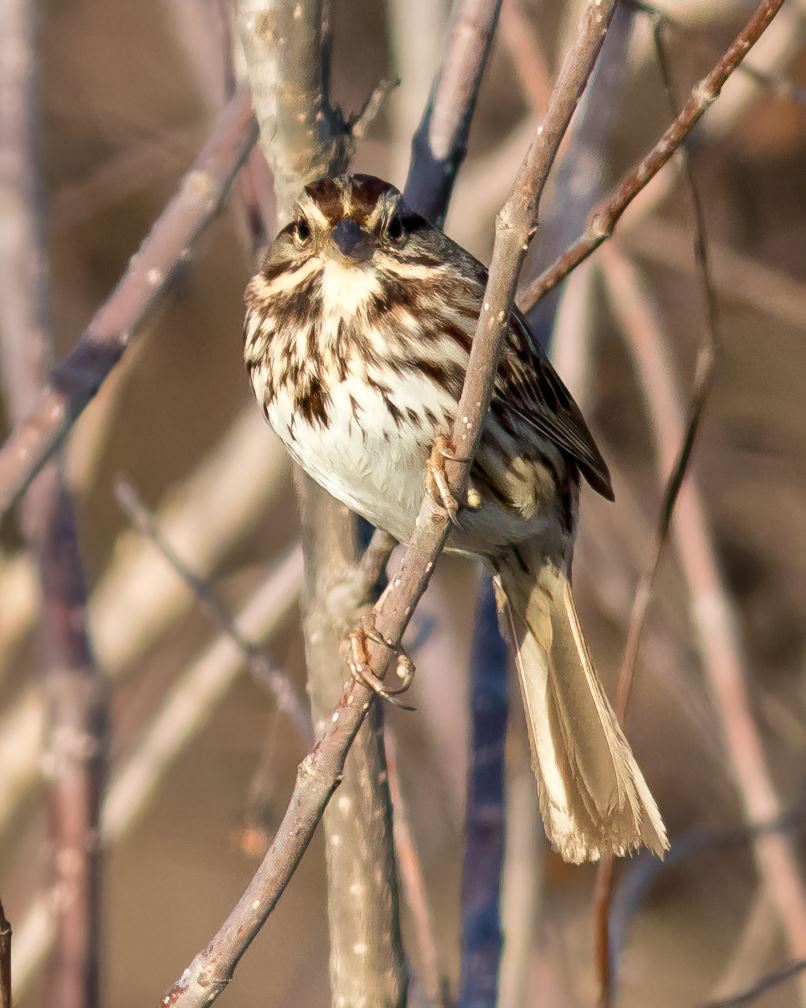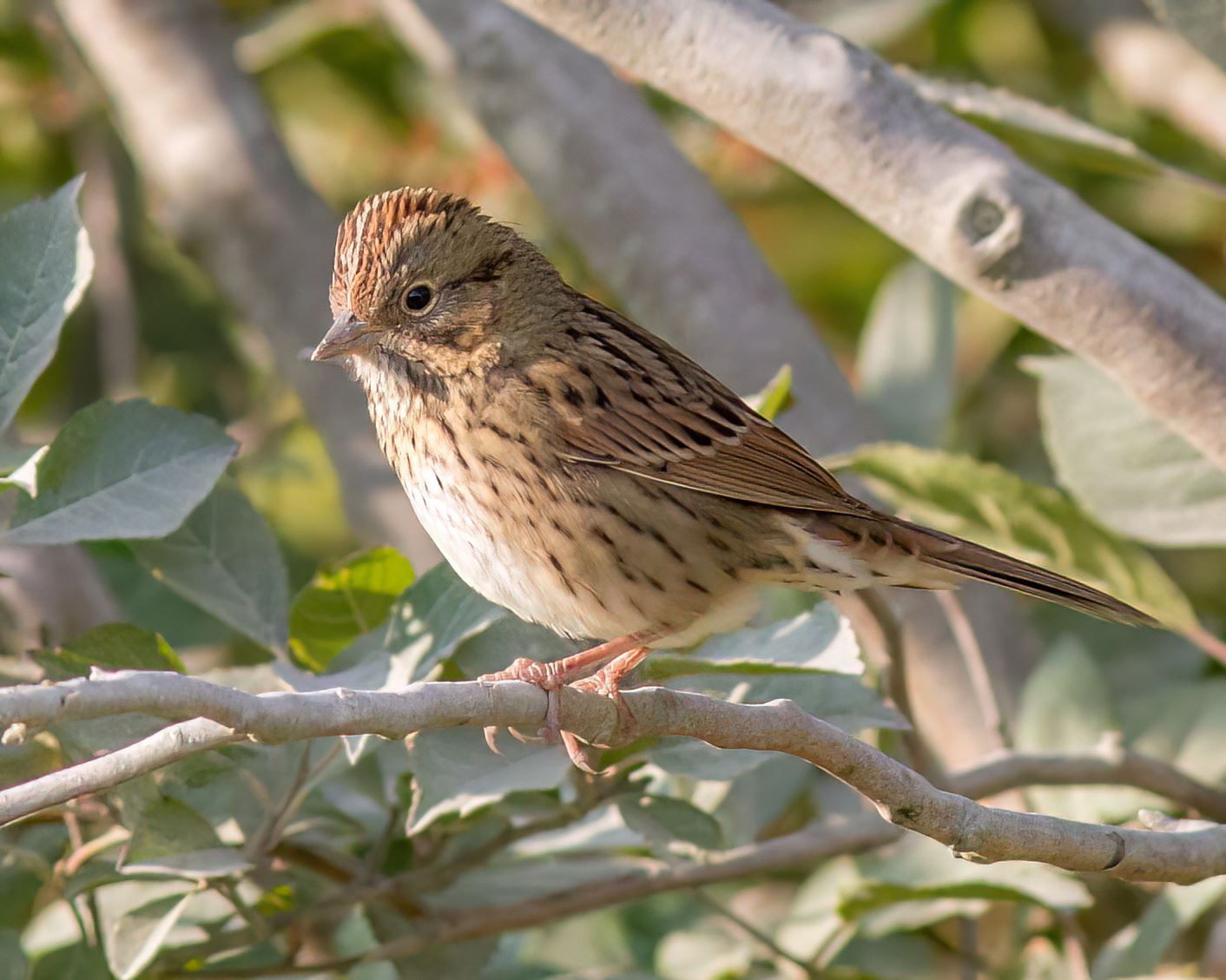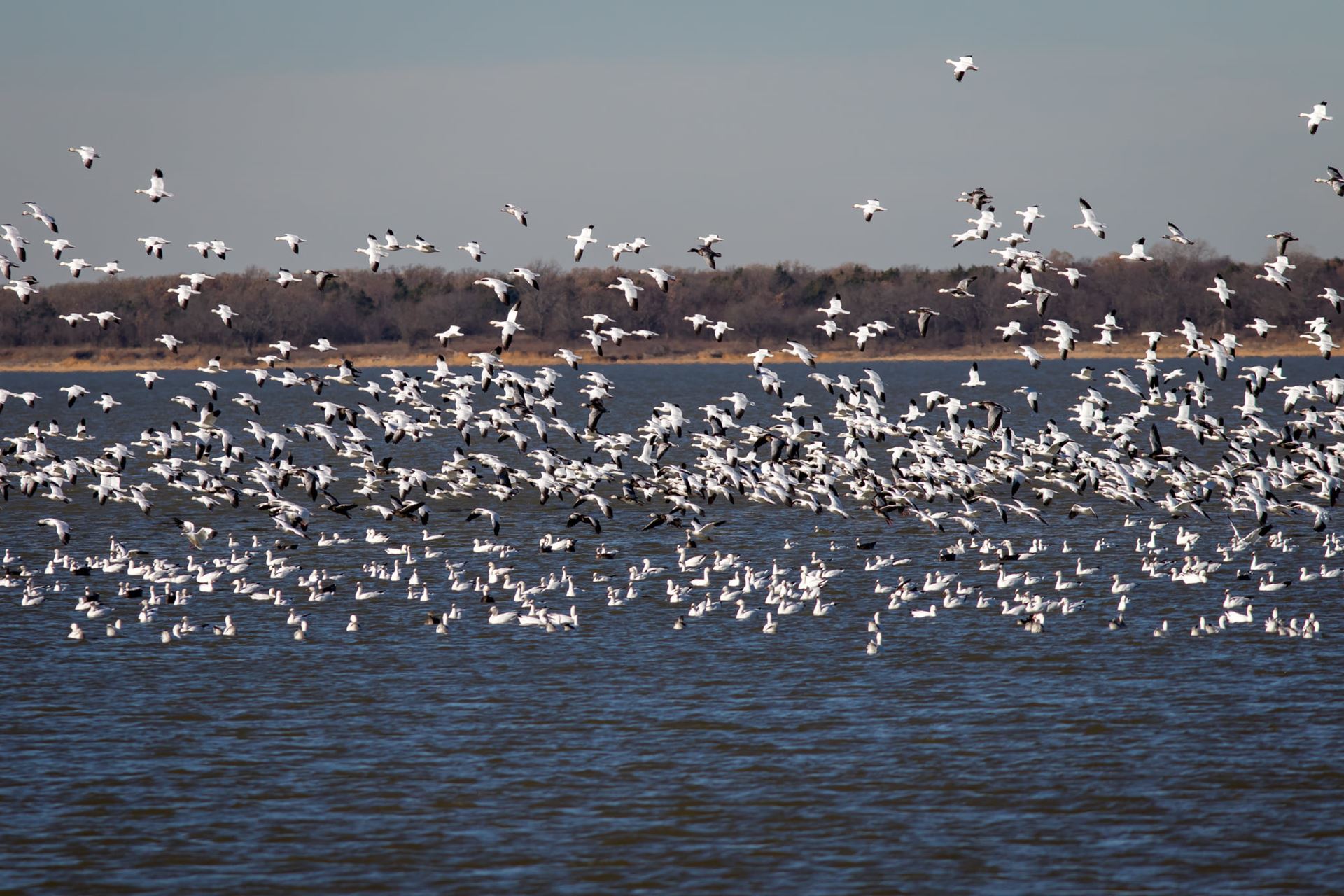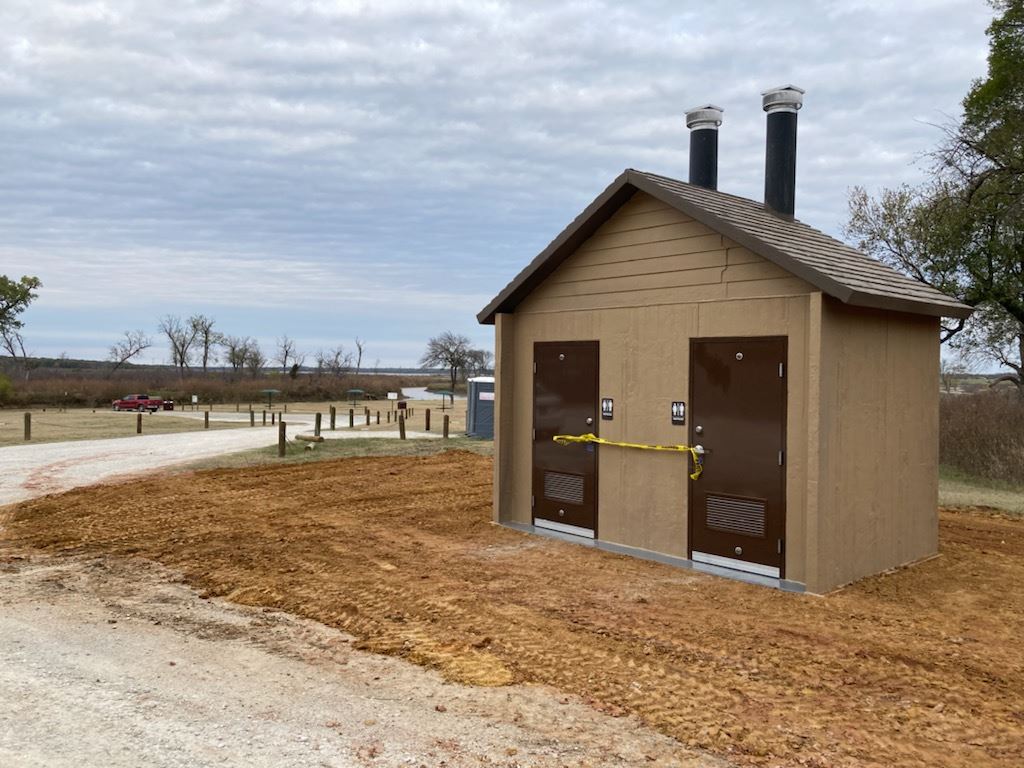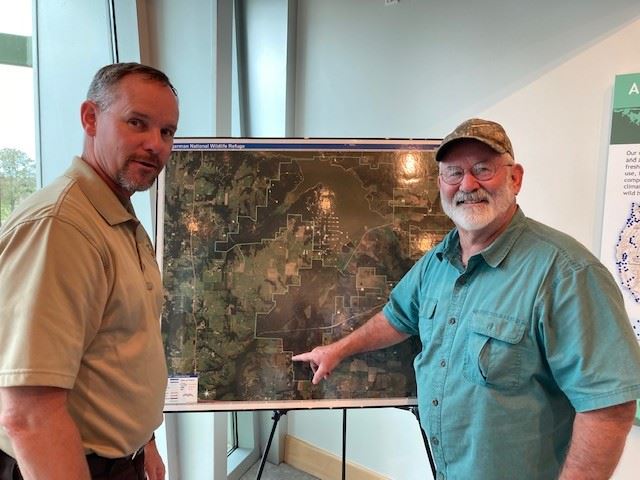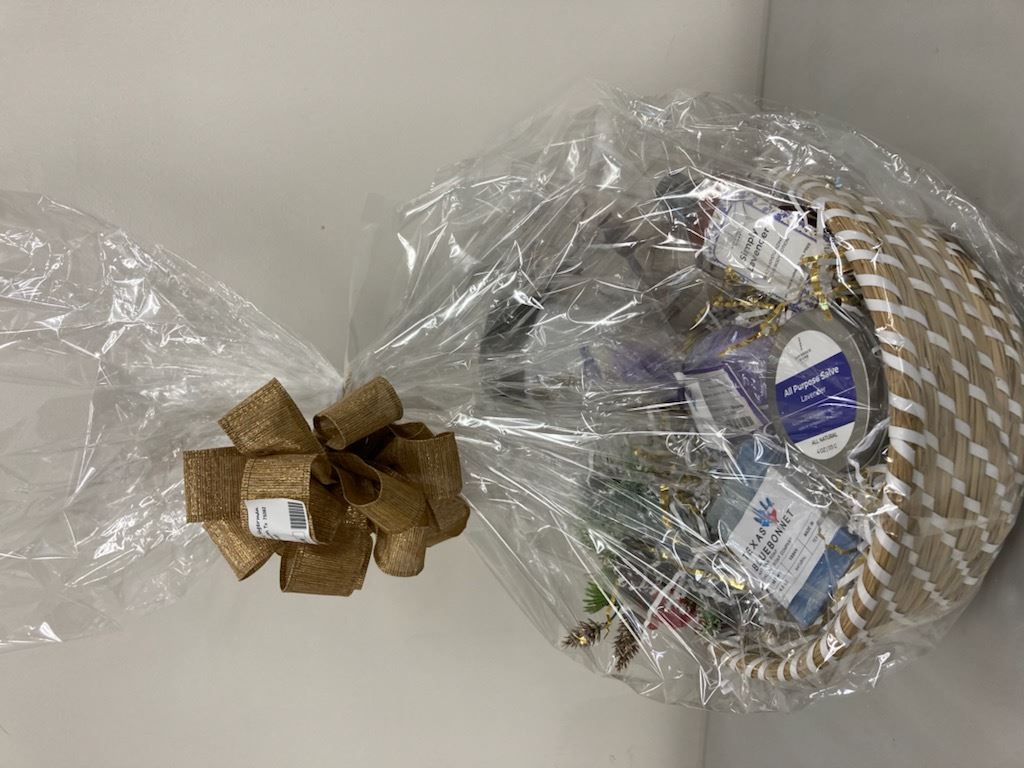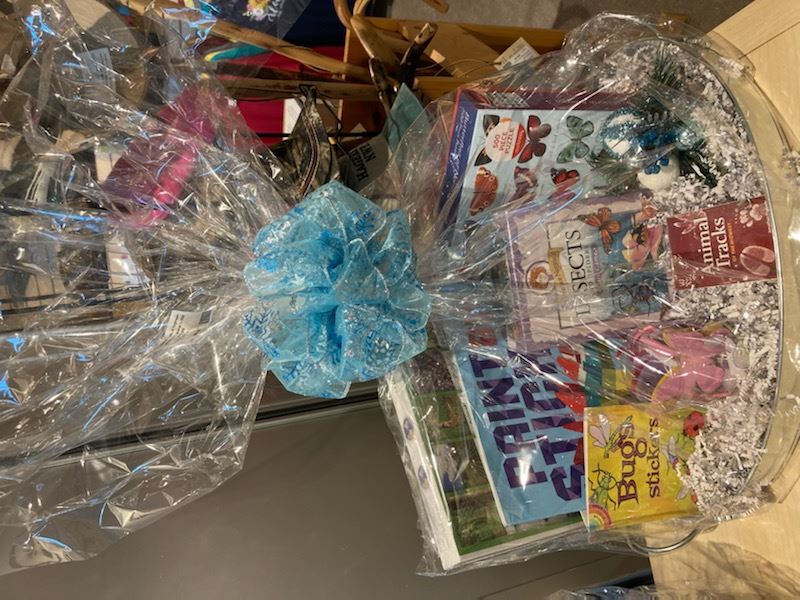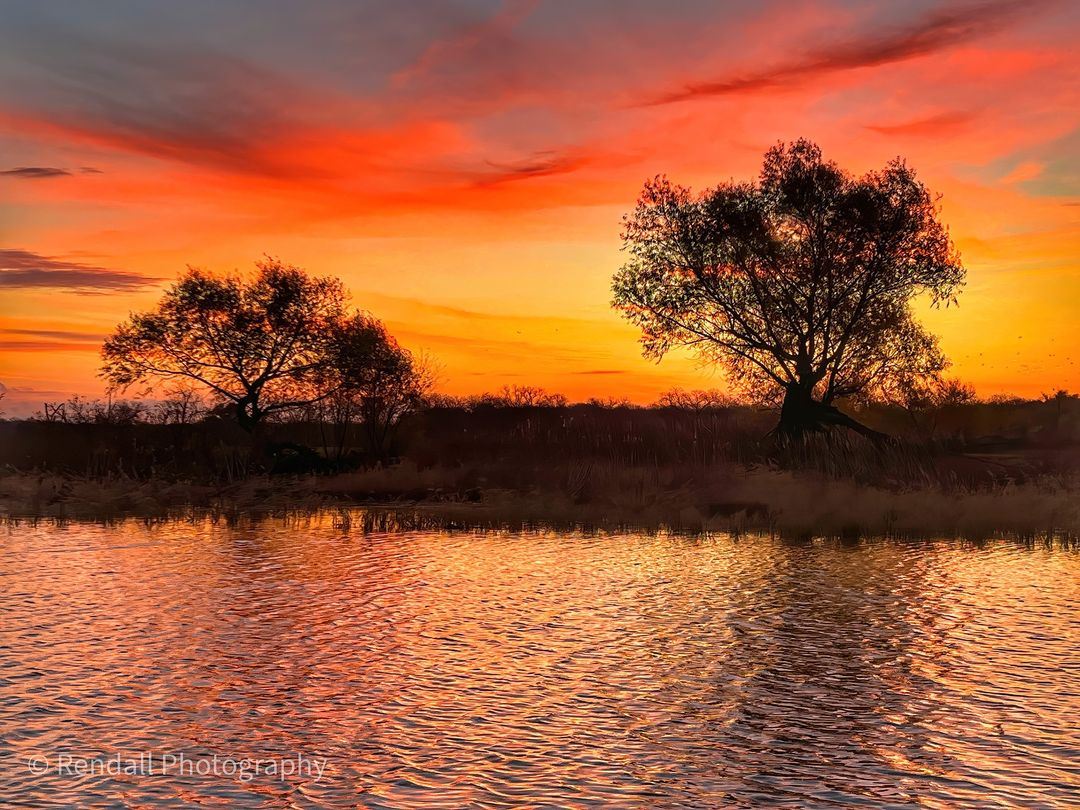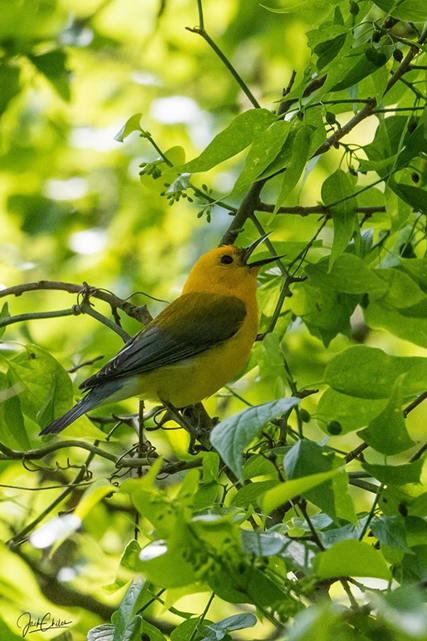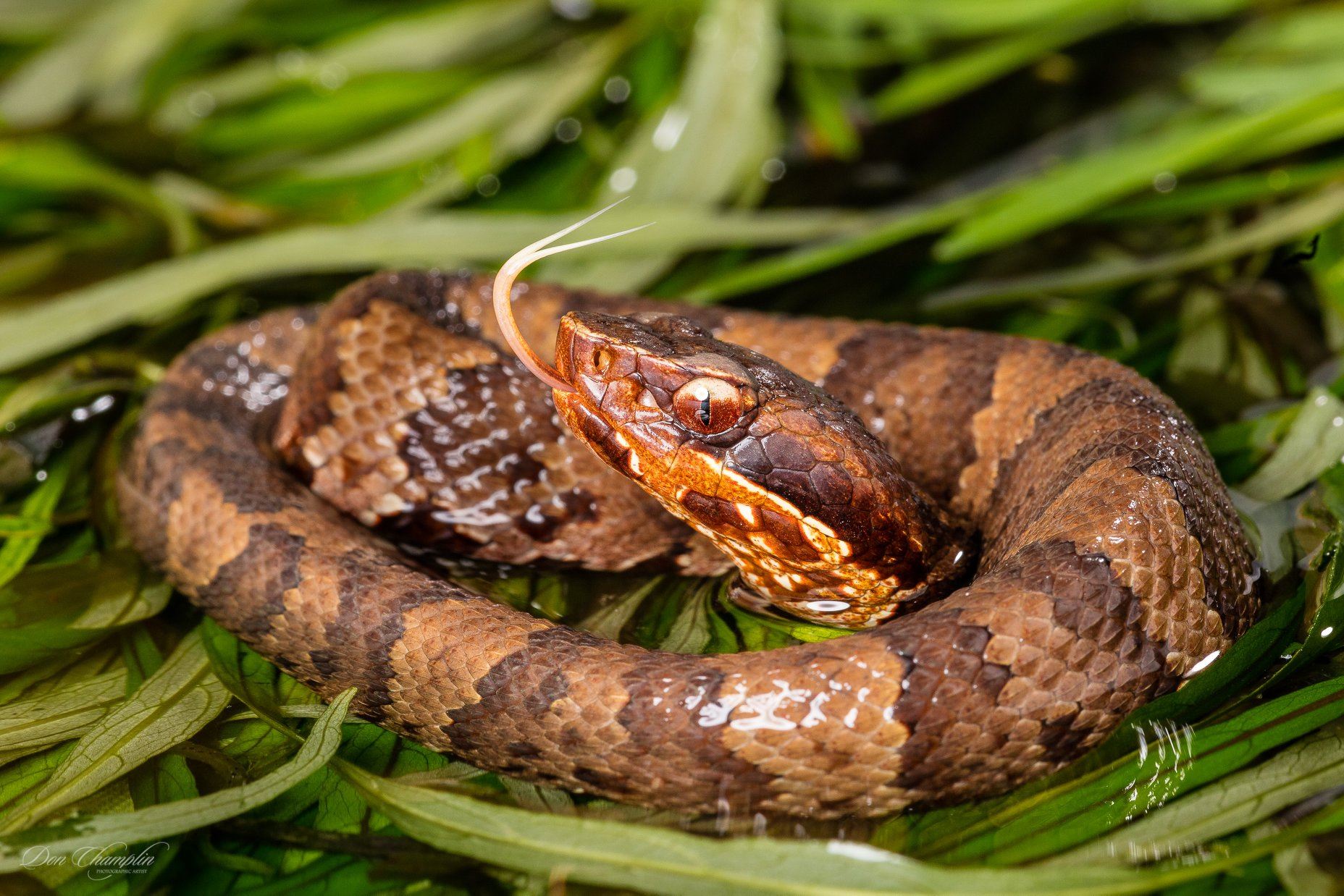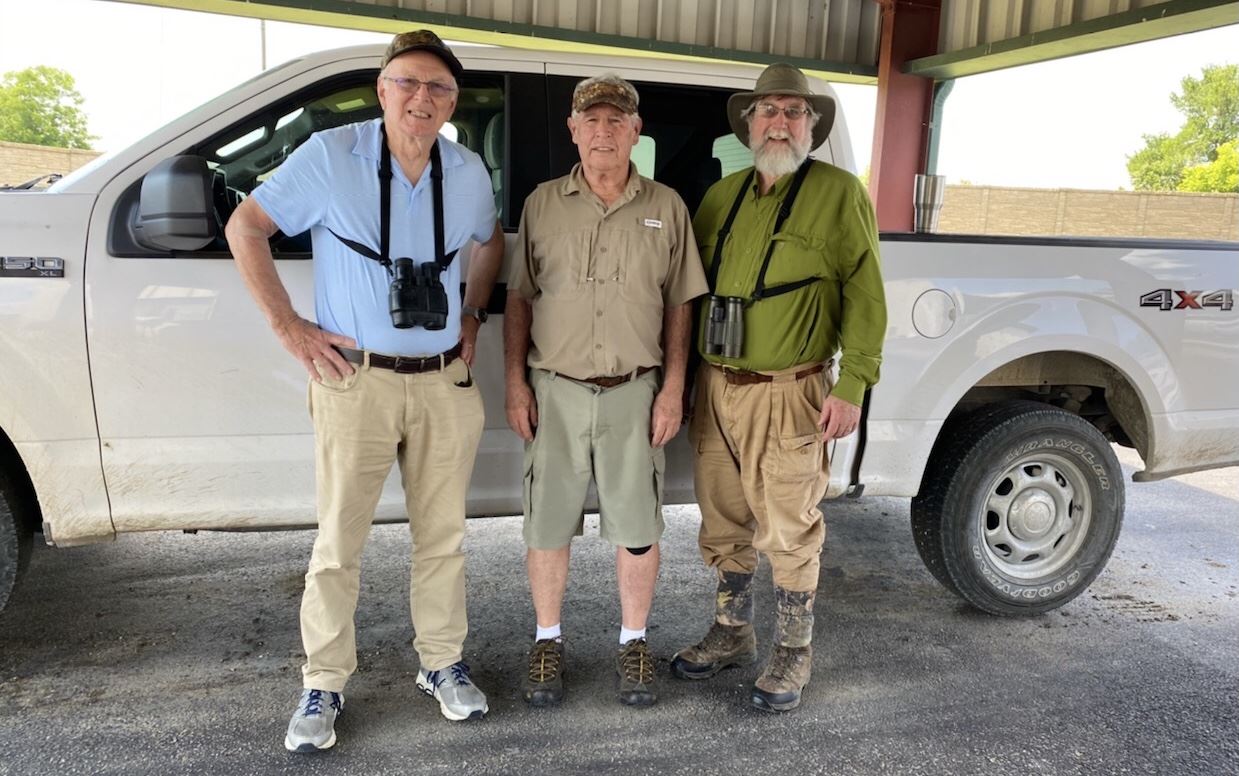Sparrows of Hagerman – Part I Article and Photos By Laurie Sheppard As you visit the refuge, have you ever noticed a small, brown, rather nondescript bird scratching in the dirt, sneaking through the grass, or hopping around in a tree? You may have thought to yourself “it’s just a sparrow” but which sparrow??? Sparrows are challenging to identify, even for experienced birders. They share many common characteristics and often don’t sit still very long to let you observe their details. Nearly two dozen sparrow species may be found at the refuge, given the right time |
White-throated Sparrow |
of year and habitat, and a small number of other birds could be mistaken for sparrows as well. But before you throw up your hands and stop looking at the “little brown birds” on the landscape, here’s a few fun facts about some of the sparrows you may be seeing. |
Sparrows are found at Hagerman year-round, but not all species are present all the time. Summer sparrows include Grasshopper Sparrows and Lark Sparrows. Grasshopper Sparrows generally arrive in early to mid-April but are not often seen once nesting begins. Most migrate further south by late September. Lark Sparrows, on the other hand, may be in the area year-round, but are mostly seen in spring and summer. Even Field Sparrows may be found in summer although they are more common in winter. By December, the winter sparrows have arrived in large numbers, and there are several you might easily encounter. The most common sparrow many people see is the Savannah Sparrow. They are Savannah Sparrow |
one of the earliest migrant sparrow species to arrive in September and the last to leave in May. These curious birds are seed eaters when they are not breeding, so in our area they are often found on roadside edges or open fields hunting for small seeds from grasses or forbs. When startled, they will often hop up onto a small tree or a barbed wire fence to see what disturbed them. Savannah Sparrows have a streaky breast, short tail, small head, and often have a yellow wash above the eye. |
Song Sparrow |
Lincoln's Sparrow |
A very similar looking sparrow is the Song Sparrow. It also has a streaky breast and similar facial markings, but those generally are darker and bolder in the Song Sparrow. They have a more varied diet, including both seeds and fruits. This leads them to frequent more diverse habitat. The Song Sparrow’s tail is much longer than the Savannah Sparrow’s, and the Song Sparrow never has yellow above the eye. They are also more vocal and even in winter, may be heard calling in forest edges, marshes, and overgrown fields. Lincoln’s Sparrows may be found in many of the same places as Song Sparrows but in smaller numbers. Lincoln’s Sparrows forage near the ground and are rarely far from dense cover, although they often will hop up to a higher vantage point when disturbed. The streaking on their breast is very fine and overlays buff feathers giving the birds a very neatly composed appearance. They share the striped brown back of most sparrows, but the nape of their neck and head are unmarked gray. |
Many winter visitors to Hagerman NWR from other parts of the United States are looking for Harris’s Sparrows, since their winter range is restricted to the central U.S. Harris's Sparrow is the only North American songbird that breeds in Canada and nowhere else in the world. Unlike many ground foragers, Harris’s Sparrows appear quite bold, feeding in the open on roadside edges and near feeders. They are larger than most sparrows and have varying amounts of black at the throat, face, and crown. Older birds, identified by the amount of black on their face and bib, get the best access to food and roost sites. Often seen in groups, |
Harris's Sparrow |
individual Harris’s Sparrows will sometimes hop up onto fence posts or trees to view their surroundings. Driving through the woods in the Sandy unit or even along Bennett Road, you will often hear the high pitched chipping note of White-throated Sparrows. You may also see them at the feeders outside the Visitor Center or in the Butterfly Garden. White-throated Sparrows have an unmarked grayish breast with a bright, white throat. Many adults have a black and white striped head with a yellow spot above the eye, but others have dark brown and buff striping on the head. Both color variations may be seen in the same flock. These birds often feed on the ground, scratching through the leaves, and are generally seen in groups. They are quite vocal even in winter and can be easily identified by their unique song of “poor Tom Peabody-Peabody-Peabody”. |
Another sparrow with a gray breast and a black and white striped head is the White-crowned Sparrow. These are much more likely to be in brushy borders and overgrown fields than in the woods. You will often find them feeding on last season’s seedpods in the Butterfly Garden or around the Visitor Center parking lot and they may be coaxed to home feeders. In this species, all adults have the black and white stripes – seeing a bird with brown stripes indicates you are looking at a juvenile bird. The song of the White-crowned Sparrow Is one of the most-studied sounds in all of animal behavior. Different subspecies across the country sing |
White-crowned Sparrow |
clearly different songs, but they’re all recognizable by the sweet, whistling introduction, a succession of jumbled whistles, and a buzz or trill near the end. With nearly two dozen sparrow species possible at Hagerman NWR, I’ve barely scratched the surface with these six, but they are among the most likely ones you will see this time of year. Future editions will focus on other winter and spring sparrows, and maybe a few birds that could be mistaken for sparrows. |
Refuge Update: The visitor center is open Monday through Saturday 9-4, Sunday 1-5. It's a great time to visit the refuge! The Geese are here!! By the thousands! They are quite a site. |
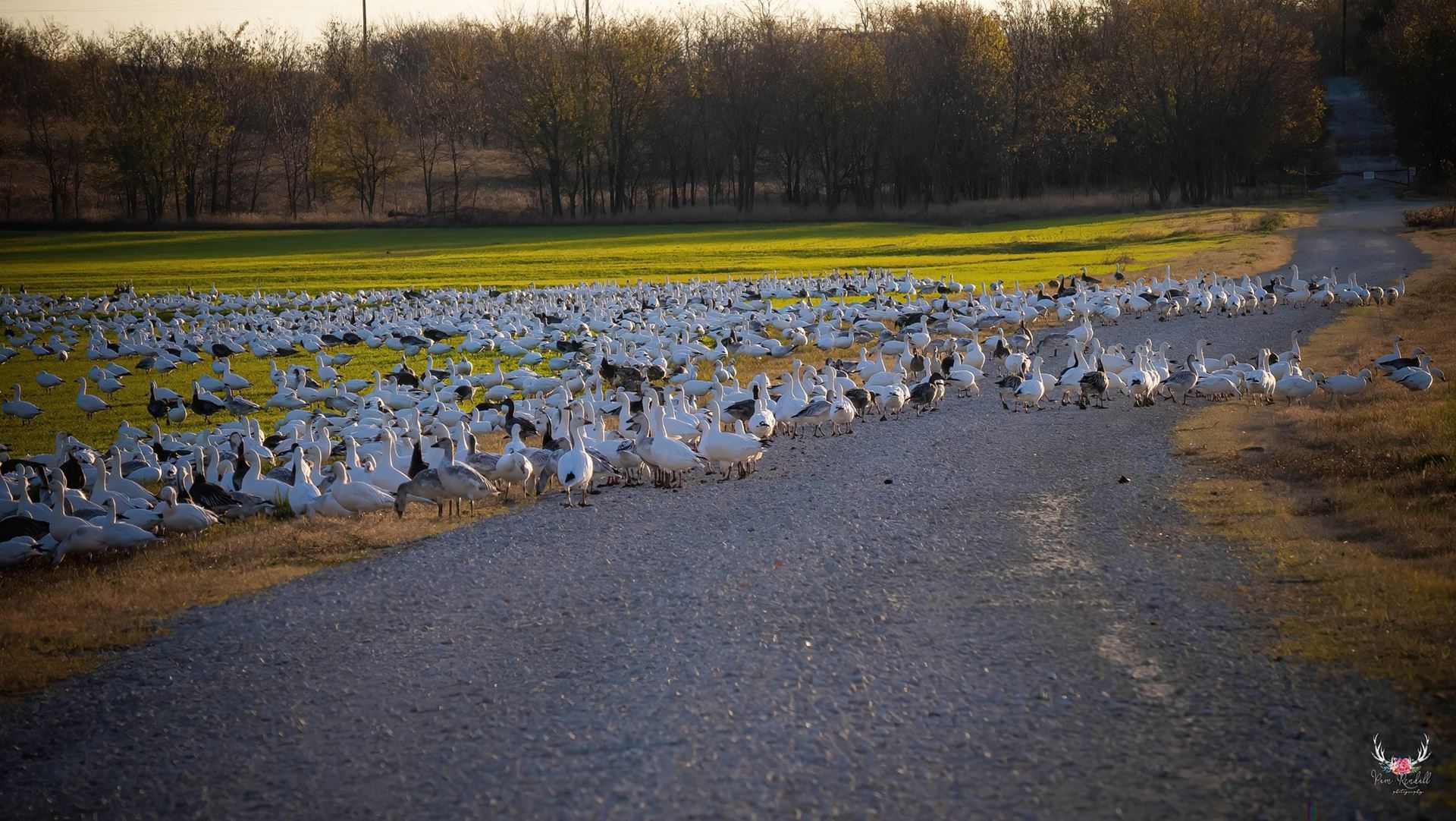 Photo by Pam Rendall-Bass |
Photo by Laurie Sheppard |
Special Closure: The Meyers Unit and associated Raasch Trail will be closed to the public from the evening of 13 January (Friday night) through 15 January (Sunday afternoon). The rest of the refuge will remain open to the public. |
New restrooms at Big Mineral!
|
The Friends of Hagerman Adopt-A-Nestbox Program
Every year beginning on December 1st, the Friends of Hagerman gives the public an opportunity to support the Eastern Bluebird population and learn all about them via the Adopt-A-Nestbox Program. Participants of the Adopt-A-Nestbox program will be invited to name their adopted nestbox, and visit it along a Hagerman NWR hiking trail as often as they like. Participants will receive an email every week during nesting season with a picture of the inside of the nestbox and an explanation of its stages of development. An adopted nestbox makes a great Christmas gift! A great way to support the Eastern Bluebird population while learning all about them! The Adopt-A-Nest program is sold out for the 2023 season. Look for them to go on sale December 1st next year! |
Tales from the Visitor Center by Pat Crone
A most interesting person came into the Hagerman Visitor Center recently. David Beck of Gainesville, Texas, is shown showing Administrative Officer Tim Magee the exact place on the map –close to Keys Road--where he harvested the very first deer at the very first Hagerman NWR hunt. The year was 1985. Although it was the first deer on the first hunt, it was the second day of that hunt. David explained that it was a cold, rainy day. “The game warden opened the gate but wouldn’t let me drive in to load the deer. He made me drag that 160 lb. deer up the hill; I thought I would have a heart attack but another hunter came and helped me. When I finally got in, all the other hunters had heard about it and were waiting on me.” What an experience! |
The 2022 Photo Contest Results are In! |
Best In Show WILDFLOWERS by Murali Hanabe
| Best In Show-Youth DRAGONFLIES by Brianna Stone
|
Holiday Shopping at the Nature Nook Did you know that the Nature Nook at the Visitor Center has Christmas items? Shop with us this Holiday season and help support the mission of the Friends of Hagerman. Proceeds from the all volunteer run gift shop provide funds to operate the tram tour, butterfly garden and more! We have a plethora of items under $10 - Perfect Stocking Stuffers! New items are continually added so come check us out throughout December! |
|
|
|
| Great Stocking Stuffers! New This Year: Gift Baskets! Left: Spa Gift Basket Right: Games for Game Night |
|
The Little Sit Join Us For Our Sunrise Bird Count Note: The December 3rd Little Sit has been moved to the end of Tern Rd. due to a temporary closure of H-pad
Photo by Melinda Hill
This event begins 30 minutes before sunrise and lasts a couple of hours, but all are welcome to come and go as they please. Participants are advised to bring a chair, binoculars and water.
|
|
Come and enjoy the sunrise with us! Photo by Pam Rendall-Bass |
Early Birding with Jack Chiles Master Naturalist Jack Chiles will lead our Early Birding event, weather permitting. Bring binoculars or borrow ours. Meet at the Visitor Center and return in time for the Second Saturday program. Free and open to the public; funded by Donations and powered by Volunteers. Please Register so we may inform you via email of unforseen changes/cancellations. |
|
Second Saturday: Venomous Snakes with Mike Keck Saturday, December 10th at 10:00 AM in the Visitor Center
Northern Cottonmouth Photo by Don Champlin Six species of venomous snakes potentially occur at Hagerman NWR. This talk will focus on the identification and natural history of those six species, with an emphasis on the three most common species at the Refuge: the copperhead, cottonmouth, and timber rattlesnake. Michael B. Keck grew up in Fort Worth. He received his Ph.D. in Quantitative Biology from the University of Texas at Arlington. His main research interests were the ecology and physiology of snakes. Since 2001, he has been a biology professor at Grayson College. He studied cottonmouths as part of his PhD dissertation. Future Programs
|
| Puddles' Craft Corner Treemendous Trees! By Cindy Steele, Master Naturalist |
|
Welcome back to Puddles’ Craft Corner! Have you ever thought about how important trees are to all of us? Trees are pretty much amazing in every way! They come in many different varieties, colors, shapes, and sizes. Not only are they beautiful, but did you know that trees are beneficial too? Trees actually keep us healthy! They cleanse the air of harmful pollution, provide us with clean oxygen, and even produce food! Wow! Trees are an important part of our world. They provide wood for building and pulp for making paper. They provide habitats (homes) for all sorts of insects, birds, and other animals. Many types of fruits and nuts come from trees -- including apples, oranges, walnuts, pears, and peaches. Even the sap of trees is useful as food for insects and for making maple syrup -- yum! Trees also help to keep our air clean and our ecosystems healthy. We breathe in oxygen and breathe out carbon dioxide. Trees breathe in carbon dioxide and breathe out oxygen. We're perfect partners! Trees do lots for us, our environment and other plants and animals in nature but we don't... |
|
|
|
| Birding with Jack Updated, Weekly Census Results By Master Naturalist Jack Chiles, Mike Petrick and Dr. Wayne Meyer (Pictured Right) |
|
Each Tuesday a team of experienced birders, including Master Naturalist Jack Chiles, traverse 35 miles of refuge roads and hiking trails, documenting every bird they encounter. This Bird Census is reported to The Cornell Lab of Ornithology for use in research, and each week we will bring you a link to their actual bird count, and a summary of their adventures. |
See Jack's notes and latest Census Results |
Shop Amazon Smile to Support the Friends of Hagerman
Kroger: Stop by the customer service desk at Kroger and link your Kroger Card to the Friends of Hagerman: the Friends will get rewards for every dollar you spend, at no cost to you. |
| Thank You To Our Contributors: Jack Chiles, Laurie Sheppard, Pat Crone, David Beck, Tim Magee, Don Champlin, Cindy Steele Refuge Manager: Kathy Whaley Deputy Refuge Manager: Paul Balkenbush Visitor Services Manager: Spencer Beard Editor: Patricia CrainFriends of Hagerman NWR Foundation 6465 Refuge Road, Sherman, TX 75092 Phone: 903-786-2826 www.facebook.com/FOHNWR |

The refuge is open from sunrise to sunset every day of the year, drive on any road unless gated.
Admission to the refuge, parking and most events/activities are funded by donations and powered by volunteers.
Please add friendsofhagerman@gmail.com to your contacts to ensure delivery of registration confirmations, account information and the Featherless Flyer
Special thanks to Nancy Miller for the amazing photo of the Visitor Center See you at the refuge! |
